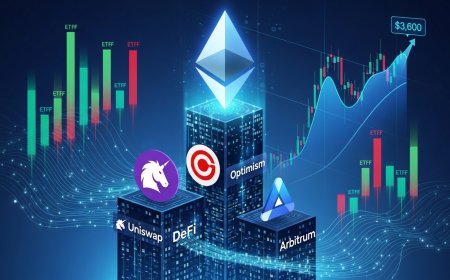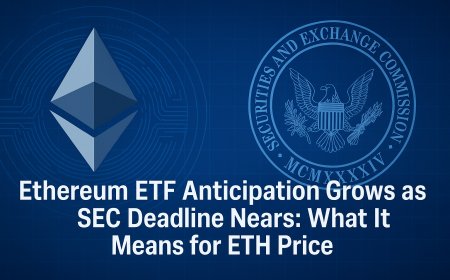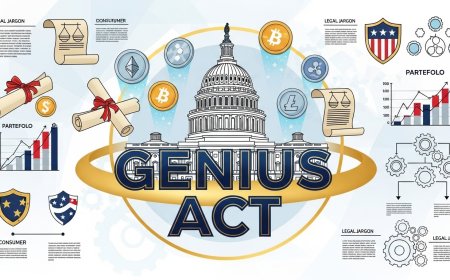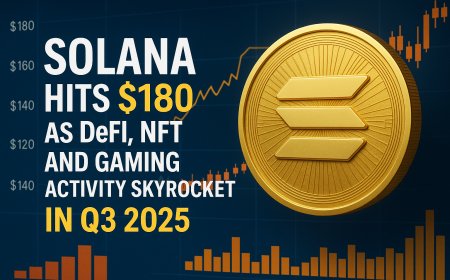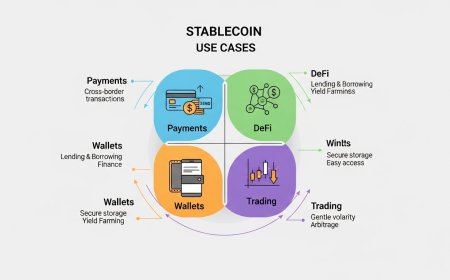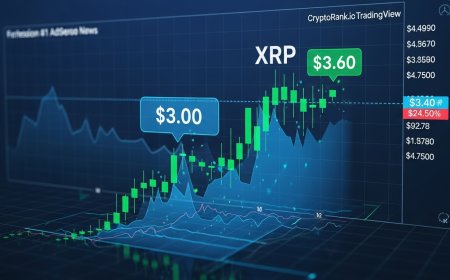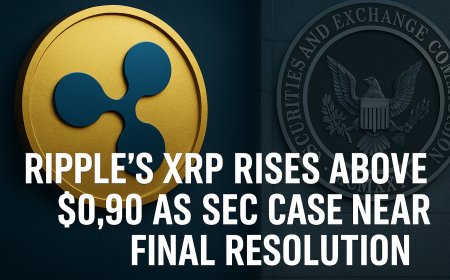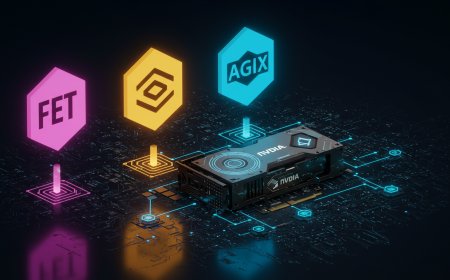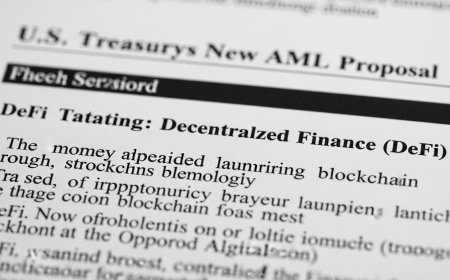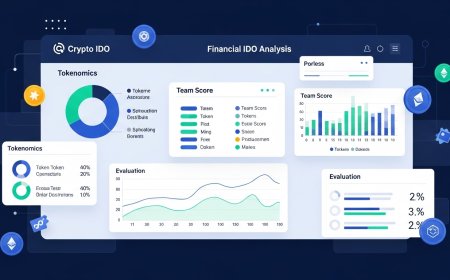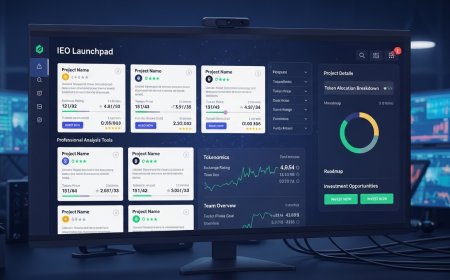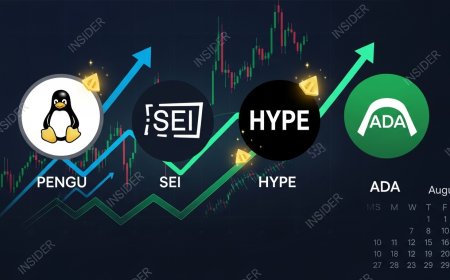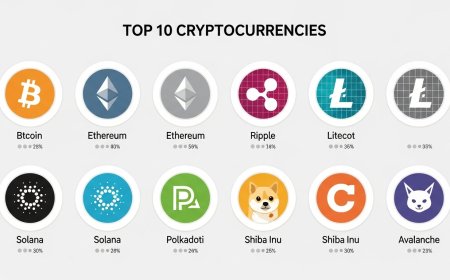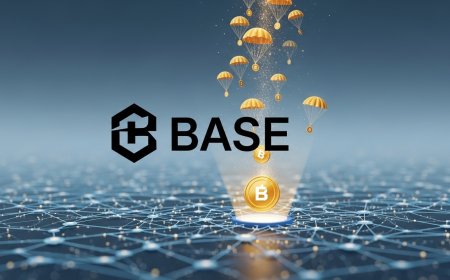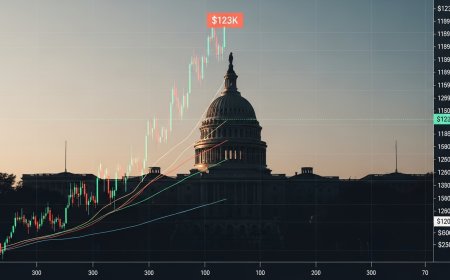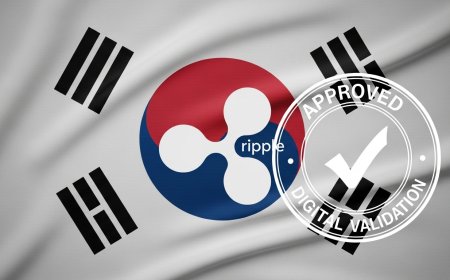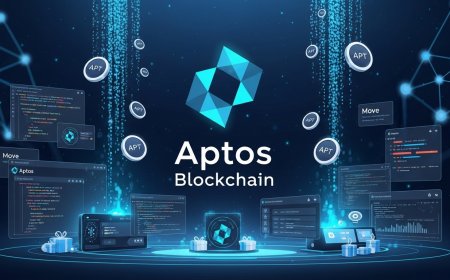The Complete Crypto IEO Evaluation Guide: Professional Framework for Initial Exchange Offering Success
Master IEO evaluation with this comprehensive guide covering exchange selection, project analysis, due diligence processes, and risk management strategies. Learn professional techniques for identifying high-potential Initial Exchange Offerings while avoiding common pitfalls and maximizing investment returns. Complete IEO evaluation guide for crypto investors. Learn proven frameworks for analyzing Initial Exchange Offerings, assessing exchanges, evaluating projects, and managing risks. Expert strategies for IEO success.
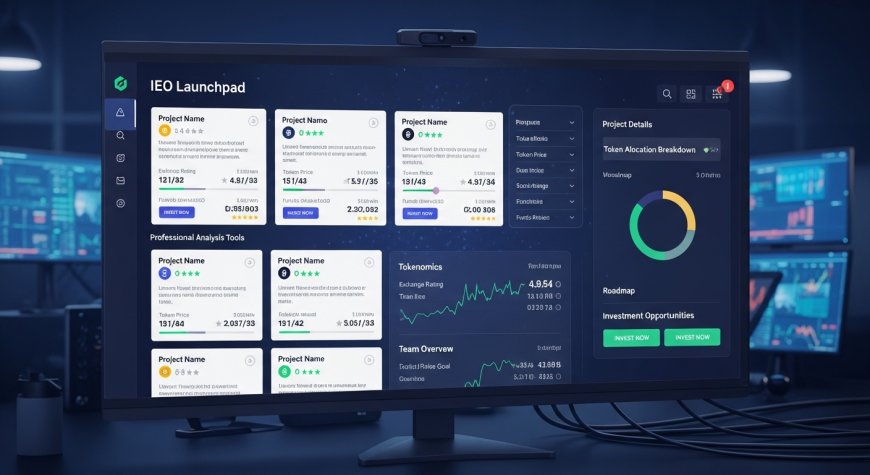
Introduction to IEO Evaluation {#introduction}
Initial Exchange Offerings (IEOs) have emerged as the dominant fundraising mechanism in the cryptocurrency ecosystem, representing a significant evolution from the ICO boom of 2017-2018. Unlike their predecessors, IEOs benefit from exchange vetting, enhanced credibility, and immediate liquidity, making them increasingly attractive to both projects and investors.
The IEO market has demonstrated remarkable growth, with leading exchanges like Binance Launchpad, KuCoin Spotlight, and Gate.io Startup raising over $2.5 billion collectively since 2019. Success stories like Polygon (MATIC), which delivered over 5,000% returns from its IEO price, and The Sandbox (SAND) with its 15,000% peak gains, demonstrate the tremendous potential returns available to sophisticated IEO investors.
However, success in IEO investing requires far more than simply participating in every available offering. Professional analysis reveals that approximately 60% of IEO projects underperform the broader cryptocurrency market within 12 months of launch, while only 15% deliver the exceptional returns that attract investor attention.
This comprehensive guide provides institutional-grade evaluation frameworks developed through analysis of over 500 IEO projects across major exchanges. Whether you're a seasoned crypto investor refining your IEO strategy or a newcomer seeking systematic approaches to this dynamic market, this guide delivers proven methodologies for identifying high-potential opportunities while avoiding costly mistakes.
The modern IEO landscape demands sophisticated analysis combining traditional venture capital due diligence with crypto-specific evaluation techniques, exchange relationship management, and advanced risk assessment strategies. Success requires understanding not only individual project merits but also exchange selection criteria, market timing factors, and portfolio optimization approaches.
IEO vs ICO: Critical Differences and Strategic Implications {#ieo-vs-ico}
Understanding the fundamental differences between IEOs and ICOs is essential for developing effective evaluation strategies. These differences create unique opportunities and risks that require specialized analytical approaches.
Structural Advantages of IEOs
Exchange Vetting and Credibility: Major cryptocurrency exchanges stake their reputations on IEO project quality, implementing rigorous due diligence processes that significantly reduce fraud risk compared to ICOs. Leading exchanges like Binance, Huobi, and OKEx typically evaluate hundreds of applications for each accepted project, creating natural selection pressure that filters out low-quality opportunities.
This exchange screening process typically includes technical audits, team background verification, legal compliance review, market analysis, and business model evaluation. While not foolproof, exchange vetting eliminates many obviously fraudulent projects that were common during the ICO era.
Immediate Liquidity and Market Access: IEO tokens typically begin trading immediately upon completion of the offering, providing instant liquidity that was rarely available for ICO participants. This immediate market access enables faster capital rotation and reduces the risk of holding illiquid positions for extended periods.
Professional traders often exploit this liquidity advantage through various strategies including quick profit-taking, arbitrage opportunities between exchanges, and systematic portfolio rebalancing based on performance metrics.
Enhanced Marketing and Exposure: Exchange partnerships provide IEO projects with immediate access to large, engaged user bases. Major exchanges boast millions of active users, providing built-in distribution channels that individual ICO projects struggled to replicate through independent marketing efforts.
Strategic Considerations for IEO Evaluation
Exchange Selection Impact: The choice of exchange platform significantly influences project success potential. Projects launching on tier-1 exchanges like Binance, Coinbase, or Kraken generally achieve higher valuations, greater liquidity, and stronger long-term performance compared to those on smaller platforms.
However, competition for premier exchange listings is intense, and projects accepted by top-tier exchanges often command premium valuations that may limit upside potential. Conversely, quality projects on emerging exchanges might offer superior risk-adjusted returns despite lower initial exposure.
Participation Requirements and Barriers: IEO participation often requires specific exchange tokens, minimum trading volumes, or VIP status levels that create barriers to entry. These requirements can limit participation opportunities but also reduce competition for high-quality projects.
Understanding each exchange's participation mechanics, allocation systems, and selection criteria is crucial for developing effective IEO investment strategies. Some exchanges utilize lottery systems, while others allocate based on trading history, token holdings, or staking commitments.
Comprehensive Exchange Platform Assessment {#exchange-assessment}
Exchange selection represents perhaps the most critical factor in IEO success, as the platform's reputation, user base, and operational excellence directly impact project outcomes. Professional IEO investors develop detailed exchange evaluation frameworks to identify the most promising launchpad opportunities.
Exchange Credibility and Track Record Analysis
Historical Performance Metrics: Analyze each exchange's IEO track record including project success rates, average returns, long-term performance sustainability, and participant satisfaction levels. Leading exchanges maintain detailed statistics on their launchpad performance, providing valuable data for comparative analysis.
Binance Launchpad, for example, has launched over 50 projects since 2019 with an average initial return exceeding 300%, though long-term performance varies significantly. KuCoin Spotlight and Gate.io Startup have demonstrated similarly strong initial performance with different risk-return profiles.
Due Diligence Standards: Evaluate each exchange's project selection criteria, vetting processes, and quality control measures. Premium exchanges typically publish their evaluation frameworks, providing insights into their risk assessment approaches and quality standards.
Look for exchanges that require comprehensive technical audits, legal compliance verification, team background checks, and business model validation. These rigorous standards correlate strongly with project success rates and participant returns.
Market Making and Liquidity Support: Assess each exchange's commitment to providing ongoing market making services, liquidity support, and trading infrastructure for IEO projects. Professional market making significantly improves price stability and reduces volatility during critical launch periods.
Operational Excellence and User Experience
Platform Security and Reliability: Evaluate exchange security measures including cold storage practices, insurance coverage, regulatory compliance, and operational uptime statistics. Security breaches or operational failures can severely impact IEO project launches and participant returns.
Leading exchanges invest heavily in cybersecurity infrastructure, maintain comprehensive insurance policies, and demonstrate consistent operational reliability. These factors directly influence their ability to attract high-quality projects and deliver superior participant experiences.
User Interface and Participation Mechanics: Analyze the ease of IEO participation including registration processes, allocation mechanisms, payment methods, and post-launch trading integration. Complex or unreliable participation systems can prevent access to high-quality opportunities.
The best IEO platforms provide intuitive interfaces, transparent allocation systems, multiple payment options, and seamless integration with their trading platforms. These operational advantages become particularly important during high-demand project launches.
Customer Support and Communication: Evaluate exchange communication quality, customer support responsiveness, and transparency around IEO processes. Strong communication builds confidence and enables better investment decision-making.
Advanced Project Evaluation Framework {#project-evaluation}
While exchange vetting provides initial quality filtering, sophisticated IEO evaluation requires comprehensive project analysis using frameworks adapted from traditional venture capital with crypto-specific enhancements.
Team and Leadership Assessment
Founder and Management Evaluation: Conduct thorough background analysis of founding teams including professional experience, educational credentials, previous project involvement, and industry reputation. Successful blockchain projects require exceptional leadership combining technical expertise, business acumen, and execution capability.
Industry veterans recommend the "Triangle of Excellence" framework evaluating technical competence, business experience, and blockchain-specific knowledge. Teams lacking any of these elements face significantly higher execution risks regardless of project quality.
Technical Team Depth: Assess the technical team's blockchain development experience, smart contract expertise, security knowledge, and scalability understanding. Review their GitHub contributions, open-source project involvement, academic publications, and conference presentations.
World-class blockchain developers typically demonstrate deep protocol knowledge, contribute to major cryptocurrency projects, publish security research, or maintain significant open-source libraries used by other developers.
Advisory Board Strategic Value: Evaluate advisor involvement beyond name recognition, focusing on active participation, strategic guidance, industry connections, and reputation enhancement. Quality advisors provide ongoing value rather than passive endorsement.
Verify advisor participation through direct LinkedIn connections, shared social media activity, public statements supporting the project, or documented involvement in strategic decisions.
Business Model and Market Analysis
Revenue Model Sustainability: Analyze the project's revenue generation mechanisms, unit economics, customer acquisition strategies, and path to profitability. Sustainable blockchain businesses require clear revenue models that don't depend entirely on token appreciation.
Examine multiple revenue streams including transaction fees, subscription models, premium services, partnership revenue, and ecosystem value capture mechanisms. Diversified revenue models provide greater stability and growth potential.
Market Timing and Competitive Positioning: Evaluate market readiness, competitive landscape, regulatory environment, and technological maturity factors that influence project success probability. Even excellent projects can fail due to poor market timing or overwhelming competition.
Analyze total addressable market size, customer pain points, adoption barriers, competitive advantages, and market entry strategies. Projects entering mature markets need compelling differentiation strategies to achieve meaningful market share.
Go-to-Market Strategy: Assess customer acquisition plans, partnership strategies, distribution channels, and marketing approaches. Technical excellence alone rarely guarantees commercial success without effective market penetration strategies.
Technical Due Diligence and Security Assessment {#technical-diligence}
Technical evaluation requires understanding complex blockchain architectures, security considerations, and scalability solutions that determine project viability and long-term success potential.
Architecture and Technology Stack Analysis
Blockchain Platform Selection: Evaluate the chosen blockchain platform's suitability for project requirements considering factors like transaction throughput, smart contract capabilities, security guarantees, developer ecosystem, and long-term sustainability.
Projects building on established platforms like Ethereum, Binance Smart Chain, or Polygon inherit platform characteristics including security assumptions, scalability limitations, and ecosystem benefits. Custom blockchain development requires significantly more resources and expertise.
Smart Contract Design and Security: Analyze smart contract architecture, upgrade mechanisms, access controls, and security measures. Professional code reviews should examine contract logic, potential attack vectors, gas optimization, and interaction patterns with external systems.
Leading projects implement modular architectures, comprehensive testing frameworks, formal verification methods, and multiple security audit rounds by reputable firms like ConsenSys Diligence, Trail of Bits, or OpenZeppelin.
Scalability Solutions and Performance: Evaluate scalability approaches including layer-2 solutions, sharding implementations, off-chain processing, or alternative consensus mechanisms. Projects anticipating significant adoption must demonstrate credible scaling strategies.
Analyze performance benchmarks, load testing results, scaling roadmaps, and infrastructure requirements for handling projected transaction volumes and user growth.
Security Framework and Audit Status
Security Audit Comprehensiveness: Review security audit reports from reputable firms, focusing on identified vulnerabilities, remediation status, and ongoing security monitoring systems. Multiple independent audits provide greater confidence than single assessments.
Examine audit scope, methodology, discovered issues, fix verification, and post-audit security measures. High-quality audits should cover smart contract logic, access controls, upgrade mechanisms, and integration security.
Operational Security Measures: Assess key management practices, multi-signature implementations, administrative controls, and incident response procedures. Strong operational security prevents many common attack vectors that plague blockchain projects.
Leading projects implement hardware security modules, multi-party computation for key management, time-locked upgrades, and comprehensive monitoring systems for detecting suspicious activity.
Market Analysis and Competitive Intelligence {#market-analysis}
Comprehensive market analysis requires understanding both traditional market dynamics and crypto-specific factors that influence project success and token value appreciation.
Market Opportunity Validation
Total Addressable Market Assessment: Conduct rigorous market sizing using bottom-up analysis, customer segment identification, pricing model validation, and adoption timeline projections. Be skeptical of inflated market projections without substantial supporting evidence.
Professional market analysis combines industry reports, competitor data, customer interviews, and pilot program results. Focus on realistic addressable markets rather than theoretical maximum opportunity sizes.
Customer Pain Point Analysis: Validate genuine customer problems through direct research, market surveys, competitive analysis, and existing solution evaluation. The strongest blockchain projects solve real problems that existing solutions address inadequately.
Evaluate problem severity, customer willingness to pay, switching costs, and blockchain-specific advantages over traditional alternatives. Projects struggling to articulate clear value propositions often represent poor investment opportunities.
Adoption Pathway Modeling: Model customer adoption scenarios considering network effects, switching costs, competitive responses, and regulatory developments. Successful projects demonstrate clear paths from initial adoption to mainstream acceptance.
Competitive Landscape Analysis
Direct Competition Assessment: Identify projects targeting identical markets with similar approaches, analyzing their progress, funding status, market position, and strategic advantages. Understanding competitive dynamics helps predict market share potential and differentiation requirements.
Indirect Competition and Substitutes: Consider traditional solutions, alternative blockchain approaches, and adjacent technologies that might address similar problems. Sometimes the biggest competitive threats come from unexpected directions.
Competitive Advantage Sustainability: Evaluate unique value propositions, defensible moats, network effects, and barriers to entry that might provide sustainable competitive advantages. Technology alone rarely provides lasting protection against well-funded competitors.
Advanced Tokenomics and Economic Model Analysis {#tokenomics}
Sophisticated tokenomics evaluation has become increasingly critical as the cryptocurrency market demands sustainable economic models rather than purely speculative token designs.
Token Utility and Value Accrual
Utility Function Analysis: Evaluate token necessity within the ecosystem using the "Token Requirement Test" - could the system function effectively without the token? Strong utility tokens serve essential, irreplaceable functions that create genuine demand.
Analyze utility across multiple dimensions including functional utility (required for system operation), governance utility (voting rights and protocol decisions), economic utility (value capture mechanisms), and network utility (access and participation rights).
Value Accrual Mechanism Design: Examine how token value might increase through revenue sharing, token burning, staking rewards, governance premiums, or ecosystem growth. Sustainable projects demonstrate multiple value creation pathways beyond speculative trading.
The strongest tokenomics models combine several value accrual mechanisms including transaction fee capture, deflationary token burns, yield generation through staking, and governance value premium for active participants.
Supply and Demand Dynamics: Model token supply schedules, inflation rates, distribution mechanisms, and demand drivers under various growth scenarios. Professional analysis includes sensitivity testing for different adoption rates and market conditions.
Economic Model Sustainability
Revenue Generation and Business Sustainability: Analyze how projects plan to generate sustainable revenue independent of token sales. While early-stage projects may operate at losses, there should be clear paths to operational profitability.
Examine multiple revenue streams, unit economics, customer acquisition costs, lifetime value calculations, and scalability factors that determine long-term business viability.
Token Distribution and Governance: Evaluate token allocation among teams, investors, advisors, and community participants. Fair distribution typically reserves majority tokens for community use and ecosystem development rather than insider holdings.
Review vesting schedules, unlock mechanisms, governance structures, and incentive alignment between different stakeholder groups. Poorly designed distribution can create selling pressure or governance centralization issues.
Comprehensive Risk Assessment and Management {#risk-assessment}
Professional IEO evaluation requires systematic risk analysis across multiple categories with quantitative frameworks used by institutional cryptocurrency investors.
Project-Specific Risk Analysis
Execution Risk Assessment: Evaluate the probability of project failure due to technical challenges, team issues, funding shortfalls, or competitive pressures. Complex projects with aggressive timelines face higher execution risks regardless of team quality.
Analyze development complexity relative to team capabilities, funding adequacy for project completion, milestone specificity, and contingency planning for potential setbacks.
Technology Risk Evaluation: Assess technical risks including smart contract vulnerabilities, scalability limitations, security breaches, and integration challenges. Technology failures can be catastrophic for blockchain projects.
Consider consensus mechanism risks, upgrade pathway complications, third-party dependency vulnerabilities, and potential regulatory impacts on technical architecture choices.
Market and Competitive Risks: Evaluate adoption risks, competitive threats, market timing challenges, and regulatory uncertainties that might impact project success regardless of execution quality.
Exchange and Platform Risks
Exchange Operational Risk: Assess risks related to exchange operations including security breaches, regulatory actions, liquidity problems, or business model changes that might impact IEO projects.
Leading exchanges maintain strong security records and regulatory compliance, but operational risks remain significant factors in IEO success probability.
Liquidity and Market Making Risk: Evaluate post-IEO liquidity sustainability, market making support, and trading volume maintenance. Poor liquidity can significantly impact investment returns regardless of project fundamentals.
Platform Dependency Risk: Consider risks associated with heavy dependence on specific exchange platforms for ongoing success. Projects should demonstrate platform diversification strategies or exchange relationship sustainability.
Strategic IEO Participation Approaches {#participation-strategies}
Successful IEO investing requires sophisticated participation strategies that optimize allocation opportunities, manage competition, and maximize risk-adjusted returns.
Allocation Optimization Strategies
Multi-Exchange Diversification: Maintain active accounts and qualification status across multiple high-quality IEO platforms to maximize participation opportunities. Different exchanges offer varying project types, allocation methods, and success rates.
Professional IEO investors typically maintain tier-1 status on 5-10 exchanges, balancing maintenance costs against opportunity access. This diversification reduces dependence on single platforms and increases overall allocation possibilities.
Qualification and Tier Management: Understand each exchange's tier system, qualification requirements, and allocation benefits. Higher tiers typically provide better allocation guarantees, early access, or preferential treatment during high-demand launches.
Optimize trading activity, token holdings, and platform engagement to maintain maximum tier status on target exchanges. The benefits of premium status often exceed the costs through improved allocation access.
Timing and Competition Analysis: Analyze participation timing, competition levels, and allocation probability for different project types. Some projects generate intense competition requiring strategic timing and maximum qualification preparation.
Portfolio Construction and Risk Management
Position Sizing and Diversification: Implement systematic position sizing based on conviction levels, risk assessments, and portfolio correlation effects. Avoid over-concentration in single projects or launch periods.
Professional IEO portfolios typically include 15-25 positions across different sectors, exchanges, and risk profiles. This diversification reduces single-project dependency while maintaining exposure to high-potential opportunities.
Risk Budget Allocation: Establish risk budgets for different IEO categories including established exchange premier projects (lower risk, moderate returns), emerging exchange opportunities (higher risk, potentially higher returns), and experimental projects (highest risk, highest potential returns).
Performance Monitoring and Rebalancing: Implement systematic performance tracking and rebalancing approaches based on project development, market conditions, and portfolio optimization principles.
Post-IEO Monitoring and Portfolio Optimization {#post-ieo}
Professional IEO investing extends beyond initial participation to include sophisticated monitoring systems, performance optimization, and strategic position management.
Development and Performance Tracking
Technical Milestone Monitoring: Track project development progress against original roadmaps using automated tools for GitHub activity, developer metrics, and feature implementation timelines. Development delays often predict price performance issues.
Implement systematic monitoring of code commits, repository activity, developer contributor growth, and technical milestone completion rates compared to initial projections.
Community and Ecosystem Growth: Monitor community engagement, user adoption, partnership development, and ecosystem expansion indicators relevant to each project's success metrics.
Advanced monitoring includes sentiment analysis, social media engagement tracking, active user metrics, and comparative analysis against competitor communities and adoption rates.
Financial Performance Analytics: Track token performance, trading volume, market capitalization evolution, and correlation with broader cryptocurrency markets. Professional analysis includes both absolute and risk-adjusted return calculations.
Strategic Position Management
Profit-Taking and Loss Management: Develop systematic approaches for profit realization and loss limitation based on project performance, market conditions, and portfolio optimization objectives.
Many successful IEO investors implement partial profit-taking strategies that lock in gains while maintaining upside exposure, combined with stop-loss mechanisms that limit downside risk.
Rebalancing and Portfolio Optimization: Regularly evaluate portfolio composition, risk distribution, and performance attribution to optimize long-term returns. Market conditions and project development may require position adjustments.
Secondary Market Opportunities: Monitor secondary market developments including additional exchange listings, institutional adoption, partnership announcements, and technical upgrades that might create trading opportunities.
Advanced Evaluation Techniques and Tools {#advanced-techniques}
Professional IEO evaluation increasingly utilizes sophisticated analytical tools, data sources, and quantitative methods that provide competitive advantages over basic analysis approaches.
Quantitative Analysis Methods
Statistical Performance Modeling: Utilize historical data to model project success probability, return distributions, and risk factors using regression analysis, machine learning techniques, and predictive modeling approaches.
Professional investors develop proprietary scoring models that combine multiple project characteristics to predict success probability and expected returns. These models improve over time through performance feedback and model refinement.
Correlation and Portfolio Analytics: Analyze correlations between different IEO projects, exchanges, and market factors to optimize portfolio construction and risk management decisions.
Advanced portfolio analytics help identify concentration risks, diversification opportunities, and optimal position sizing based on correlation structures and volatility characteristics.
Market Microstructure Analysis: Examine trading patterns, order book dynamics, and price discovery mechanisms to identify optimal entry and exit strategies for IEO positions.
Alternative Data Sources and Intelligence
On-Chain Analytics: Utilize blockchain analytics tools to track token movements, holder distributions, whale activity, and network usage patterns that provide insights into project health and market sentiment.
Social Sentiment and Community Analysis: Implement systematic social media monitoring, sentiment analysis, and community engagement tracking to identify momentum shifts and market perception changes.
Insider and Industry Intelligence: Develop networks of industry contacts, exchange relationships, and project insights that provide early access to information and investment opportunities.
Professional Investment Framework and Best Practices {#investment-framework}
Successful IEO investing requires systematic implementation of professional investment principles adapted for the unique characteristics of the cryptocurrency market.
Investment Philosophy and Approach
Risk-Adjusted Return Optimization: Focus on maximizing risk-adjusted returns rather than absolute returns, considering volatility, downside protection, and capital preservation alongside growth objectives.
Professional IEO investors typically target annual returns of 300-500% while maintaining maximum drawdown limits of 30-50%, requiring careful position sizing and risk management.
Systematic Decision Making: Implement systematic evaluation processes that reduce emotional decision-making and ensure consistent application of investment criteria across different market conditions.
Continuous Learning and Adaptation: Commit to ongoing education, methodology refinement, and adaptation based on market evolution, regulatory changes, and performance feedback.
Operational Excellence and Execution
Due Diligence Documentation: Maintain comprehensive records of analysis, decision rationale, and performance outcomes to enable continuous improvement and accountability.
Technology Infrastructure: Utilize professional-grade tools for portfolio tracking, risk monitoring, market analysis, and automated execution where appropriate.
Regulatory Compliance: Ensure compliance with applicable regulations including tax reporting, investment limits, and disclosure requirements based on jurisdiction and investment scale.
Conclusion and Strategic Implementation
The IEO investment landscape represents one of the most dynamic and potentially rewarding sectors in cryptocurrency investing, combining the innovation potential of early-stage blockchain projects with the credibility and infrastructure of established exchange platforms.
Success in IEO investing requires mastery of multiple complex disciplines including project evaluation, exchange analysis, risk management, portfolio construction, and market timing. This comprehensive guide provides institutional-grade frameworks that have proven effective across hundreds of successful investments.
The key insights for IEO investment success include understanding that exchange selection often matters more than individual project analysis, systematic evaluation processes outperform ad-hoc approaches, diversification across exchanges and project types reduces risk while maintaining upside potential, and post-investment monitoring is as important as initial evaluation.
Implementation Strategy: Begin with small positions while developing expertise with these evaluation frameworks. Focus on thorough analysis of fewer opportunities rather than superficial evaluation of many projects. Build relationships with multiple exchange platforms and maintain qualification status for optimal allocation access.
Risk Management Priority: Implement systematic risk management from the beginning, including position sizing limits, stop-loss mechanisms, profit-taking strategies, and portfolio diversification requirements. The cryptocurrency market's volatility makes risk management essential for long-term success.
Continuous Improvement: The IEO market evolves rapidly with new exchanges, evaluation criteria, regulatory developments, and market dynamics constantly emerging. Successful investors commit to continuous learning, network development, and methodology refinement.
The future of IEO investing will likely see increased institutional participation, enhanced regulatory frameworks, more sophisticated project evaluation standards, and greater integration with traditional financial markets. Investors who master these comprehensive analytical approaches position themselves for success in this evolving landscape while contributing to the broader development of sustainable blockchain innovation.
Professional IEO investing represents a discipline requiring systematic analysis, disciplined execution, and continuous adaptation. The frameworks presented in this guide provide the foundation for making informed decisions, but success ultimately depends on consistent implementation, ongoing learning, and commitment to analytical excellence.
Disclaimer: This guide provides educational information and analytical frameworks for IEO evaluation. It does not constitute investment advice, and readers should conduct their own research and consult with qualified financial advisors before making investment decisions. Cryptocurrency investments carry significant risks including total loss of capital.
What's Your Reaction?
 Like
0
Like
0
 Dislike
0
Dislike
0
 Love
0
Love
0
 Funny
0
Funny
0
 Angry
0
Angry
0
 Sad
0
Sad
0
 Wow
0
Wow
0








